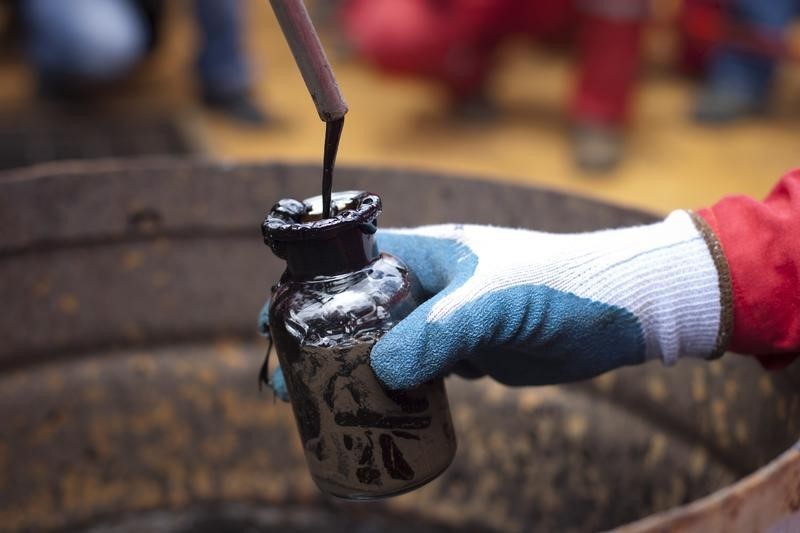Investing.com — Rate hikes are a clear and present danger to oil — market action showed Thursday even as crude prices rose a second day in a row after a large weekly drawdown in U.S. crude stocks that signaled an encouraging start to summer demand for travel.
Crude prices spent a good part of the day in negative territory as Federal Reserve Chair Jay Powell, in more comments during his European travels, showed the central bank’s determination in using rate hikes to subdue inflation running at more than twice its appetite.
In the final two hours of trade, however, both U.S. crude and global oil benchmark Brent rebounded as market participants fell back on Monday’s bullish sentiment that rode on the for the week ended June 23.
New York-traded West Texas Intermediate, or , settled up 30 cents, or 0.4%, at $69.86 a barrel, adding to Wednesday’s 2.8% rally.
London-traded crude finished its New York session up 31 cents, or 0.4%, at $74.34 per barrel. In the previous day’s trade. Brent rallied 2.4%.
Oil prices have had a disquieting June on worries about the economy, with WTI on course to finish up 0.9% after an 11% slump in May. Brent is headed for a 3% gain versus last month’s 9% drop.
“The gradual consolidation that we’re seeing in crude doesn’t appear to be nearing an end, with the price simply fluctuating between the range highs and lows over the last couple of months,” said Craig Erlam, analyst at online trading platform OANDA.
“The uncertainty around inflation, interest rates, and therefore the economy may well be behind that as investors have frequently been caught out by just how stubborn price pressures have been and how much central banks will need to do in order to contain them. Until we get more clarity on that, this range trading may continue.”
A panel discussion on Wednesday hosted by the European Central Bank and including the heads of the Federal Reserve, Bank of England and Bank of Japan, showed nearly all on board with higher interest rates.
Fed Chair Powell followed that up on Thursday by telling a banking event in Madrid that the U.S. central bank was trying to find the level that will restrain economic activity and inflation without causing unnecessary weakness.
Latest U.S. gross domestic product data also showed more resilience than thought in the economy that could put more winds behind the Fed’s rate hike sails.
U.S. grew by an annualized 2% in the first quarter of this year, the Commerce Department said Thursday in a revelation likely to add to the Federal Reserve’s relief that its rate hikes had not weighed too much on growth.
Economists polled by U.S. media had forecast a year-on-year growth of only 1.4% on the average for the January-March period. The Commerce Department’s prior growth estimate for the quarter was just 1.3%.
The Fed has been seeking instead for a “soft landing” of the economy, which translates to slower but not negative GDP growth. The latest quarterly result indicates that the central bank might just get its wish.
The , the broadest gauge for U.S. inflation, grew by 4% in the year to May, expanding at its slowest pace in more than two years. The , the Fed’s preferred inflation gauge, meanwhile, grew by 4.4% in the year to April. Both are, however, at least twice above the Fed’s 2% target for annual inflation.
The Fed, in response, has raised by 5% since the end of the coronavirus outbreak in March 2022, bringing them to a peak of 5.25%. The central bank’s next decision on rates will be on July 26. Many economists predict will add another quarter percentage point at that meeting, lifting rates to a peak of 5.5%, as it tries to further tame inflation.
Read the full article here





